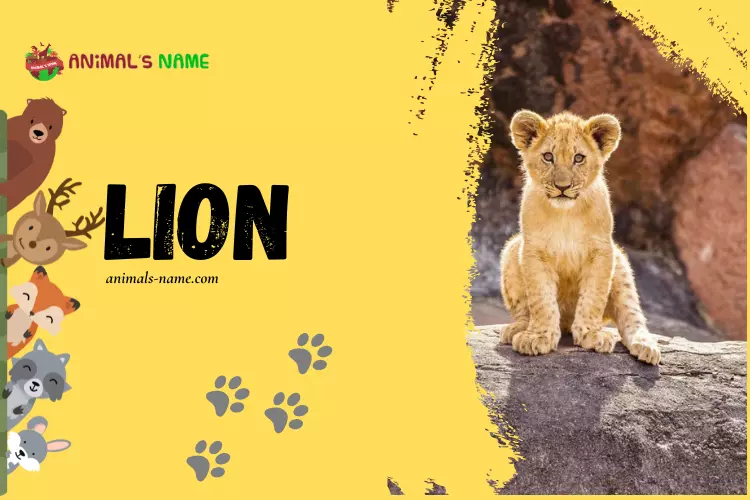Welcome to our blog post on Lions! This exciting article will examine the beautiful world of Lions, exploring their history, facts, size, habitat, and classification. Lions are one of the most majestic and fascinating animals on the planet, so let’s dive in and discover more about these incredible creatures!
The history of Lions dates back thousands of years. They have been a prominent symbol in many cultures, representing royalty, strength, and courage. Lions have also been mentioned in ancient texts, legends, and folklore, capturing the imagination of humans throughout history. Today, Lions can be found in parts of Africa and Asia, captivating people with their striking appearance and extraordinary behaviour.
Now, let’s talk about some fascinating facts about Lions. Did you know that Lions are the only big cats that live in groups called prides? This pride usually consists of related lionesses, their offspring, and a few adult males. Another interesting fact is that lions are excellent hunters and can reach up to 50 miles per hour in short bursts, making them powerful predators in their habitat.
Regarding habitat, Lions are mainly found in the grasslands, savannas, and dense bushes of Africa. They are well-adapted to living in these environments, with their sandy-coloured fur providing excellent camouflage. Lions are also known for their roars that can be heard from miles away, used to communicate with pride members and mark their territory.
Regarding classification, Lions belong to the Felidae family and are known as Panthera leo in scientific terms. They are part of the larger cat family, which includes other fascinating animals such as tigers, leopards, and cheetahs. Understanding their classification helps us appreciate the connections and uniqueness of animals in the same family.
So there you have it! A brief overview of Lions, covering their history, facts, size, habitat, and classification. Lions are remarkable creatures, captivating us with their strength, beauty, and fascinating behaviour. Stay tuned for more exciting articles about different animals in the future as we continue to explore the incredible world of animals. Thank you for reading!
History of Lion
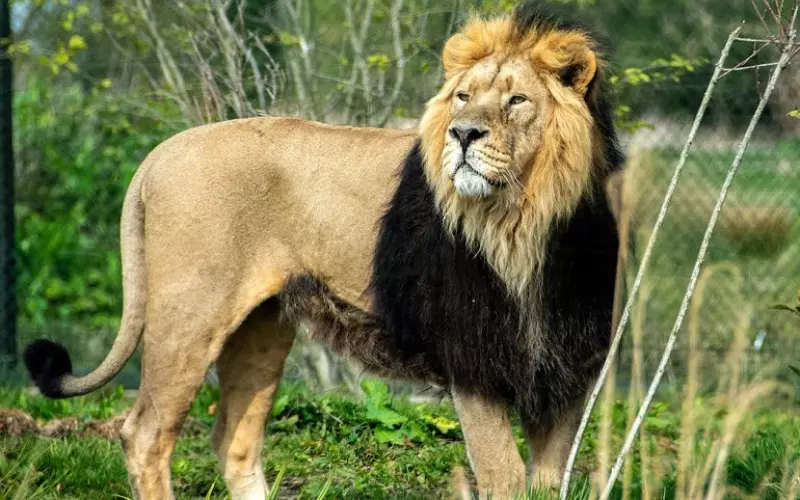
The history of lions dates back thousands of years. These majestic creatures have been admired and feared by humans throughout history. Lions are native to Africa and are considered the animal kingdom’s kings. They have been depicted in ancient cave paintings, sculptures, and even ancient texts.
Lions were once widespread across Africa, Europe, and Asia. However, their population has significantly declined due to habitat loss, hunting, and human activities. Today, lions are mainly found in Africa, with a small population living in the Gir Forest of India.
Throughout history, lions have played significant roles in several cultures and religions. In ancient Egypt, lions were revered and associated with power and royalty. The Pharaohs of Egypt even kept lions as pets and symbols of their kingship. In Greek mythology, the lion, represented by the legendary creature, the Nemean Lion, symbolised strength and fearlessness.
Lions are known for their physical prowess and social structure. They are the only genuinely social big cats, living in pride consisting of related females, their cubs, and a few male lions. Male lions protect their pride and territory, while females work together to hunt and raise their young.
In recent years, efforts have been made to conserve and protect these iconic creatures. Conservation organizations and governments work together to preserve lion habitats and reduce human-lion conflicts. While the history of lions is filled with admiration and reverence, their future remains uncertain. We must continue supporting conservation efforts to ensure the survival of these magnificent animals for generations to come.
Importance of Lion

The lion is a critical animal in our world. It is known as the king of the jungle because it is one of the most robust and most powerful creatures on Earth. Lions play a vital role in maintaining the balance of the ecosystem.
Firstly, lions are at the top of the food chain, which means they help control the population of other animals. They prey mainly on herbivores such as zebras and wildebeests. By doing so, they prevent these animals from overpopulating and damaging the environment. Moreover, lions also keep the number of predators in check, eliminating weaker or sick individuals. This helps ensure an equilibrium in nature.
Secondly, lions have cultural and historical significance. History has featured them in many stories, myths, and proverbs. Various cultures see them as symbols of strength, courage, and majesty. Lions are closely associated with leadership and are often used as national symbols in countries. Their symbolic value is a reminder of the importance of wildlife conservation and the need to protect these magnificent creatures.
Lastly, the economic aspect of lions should not be overlooked. They have a significant impact on tourism. People worldwide come to visit wildlife reserves and national parks to see lions in their natural habitats. This contributes to local economies and provides employment opportunities for many. By protecting and conserving lions, we can ensure the sustainability of tourism and the economic benefits it brings to communities.
Lions are not only fascinating animals but also essential for the well-being of our planet. They help maintain the ecosystem’s balance by regulating other animal populations. They hold cultural and historical importance and contribute to the economic growth of many regions. Therefore, it is crucial to protect these majestic creatures and their habitats for future generations to come.
Amazing Facts About Lion
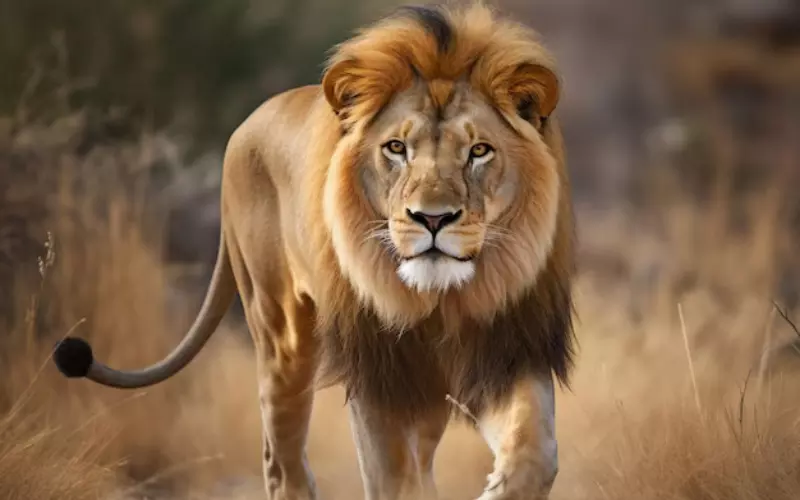
1. Lions are large mammals known as the king of the jungle.
2. They mainly live in parts of Africa, including the grasslands, savannas, and woodlands.
3. Male lions have a beautiful and distinctive thick mane of hair around their neck.
4. Only male lions have manes, while female lions have only a small amount of fur around their neck.
5. Lions are social animals and usually live in groups called pride, consisting of several lionesses and their cubs.
6. The female lions, also known as lionesses, are responsible for hunting and feeding the pride.
7. Male lions defend their pride against other male lions and protect their territory.
8. Lions are excellent hunters and primarily feed on large ungulates like zebras, buffalos, and wildebeests.
9. Lions are powerful and can bring down prey much bigger than them.
10. They have sharp and retractable claws that help them to catch and hold their prey.
11. Lions are mostly active at night (nocturnal) and sleep for about 20 hours daily.
12. They communicate through vocalizations like roaring, growling, and snarling.
13. A lion’s roar can be heard from a distance of up to 5 miles, making it the loudest roar of any big cat.
14. Female lions raise the cubs and teach them hunting skills.
15. The lion population has declined in the wild due to habitat loss, poaching, and human conflicts.
Can we keep a Lion as our Pet?
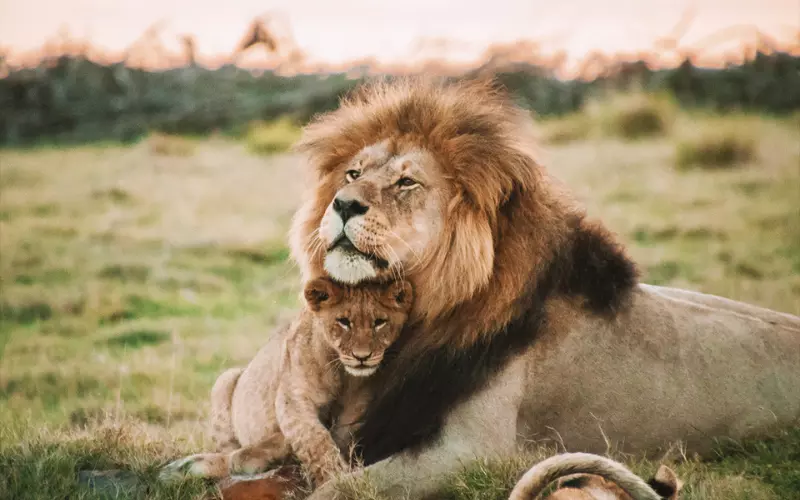
Keeping a lion as a pet is not a good idea. Lions are wild animals and need lots of space to roam and hunt for food. In the wild, they live in groups called prides and can cover large land areas. They are strong and powerful creatures that require a special environment to thrive.
Firstly, lion cubs may seem cute, but they grow to be huge and difficult to contain. They need a large enclosure with high fences, as they can climb and jump. Maintaining such an enclosure is very expensive and unsuitable for a regular household. Lions also have specific dietary needs that can be quite costly to meet. They require a diet of fresh meat, like other carnivores, which is not easily accessible or affordable for most people.
Secondly, lions are dangerous animals. They have sharp claws and teeth that they use to catch their prey. Even if raised in captivity, they still possess their instincts and can become unpredictable. Lions are not domesticated animals like dogs or cats, bred over many years to live peacefully with humans. They are meant to live in the wild, and trying to keep them as pets can be risky and even life-threatening.
It is not suitable or safe to keep a lion as a pet. They are wild animals that require vast space, special care, and a specific diet to thrive. Their instincts and size make them dangerous and unpredictable. Instead of trying to keep exotic animals as pets, it is better to appreciate and protect them in their natural habitats, where they can live freely and safely.
Size of Lion
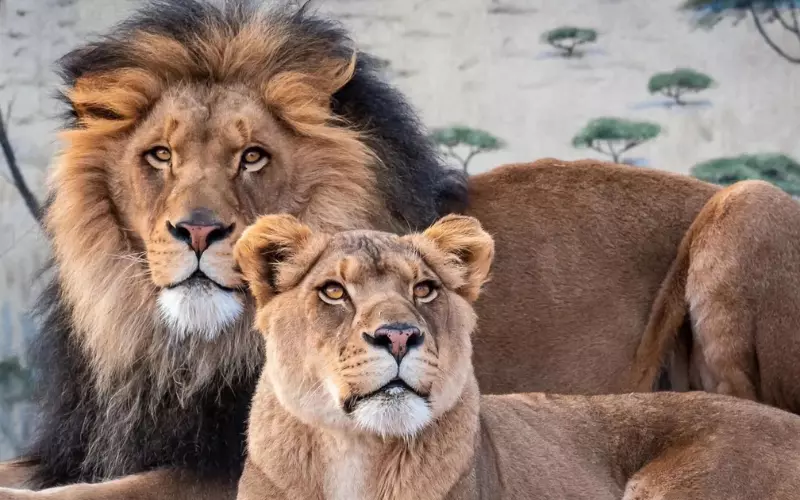
The lion is a majestic animal known for its large size and powerful presence. It is one of the biggest members of the cat family and can grow quite large. Adult male lions can reach lengths of up to 10 feet (3 meters) from their nose to the tip of their tail. They can also stand about 4 feet (1.2 meters) tall at the shoulder and weigh up to 420 pounds (190 kilograms). Female lions are slightly smaller than males but still quite big compared to other animals.
Lions have strong and muscular bodies, enabling them to have a dominant presence in the animal kingdom. Their large heads are adorned with magnificent manes, with bushy hair covering their neck and chin. The mane of a male lion can vary in colour and length depending on its age and habitat. It adds to their majestic appearance and protects them during battles with other lions and predators.
The size of a lion is a key factor in its survival and success in the wild. Their strength and size give them an advantage when hunting, as they can take down large prey. Lions have a strong bite, with their jaws capable of exerting a force of up to 600 pounds per square inch (PSI). This allows them to bring down and kill animals much more significant than themselves, like zebras and buffaloes.
The lion is a large and powerful animal. Its imposing size and strength make it the king of the jungle. With their impressive physique, lions have adapted to be skilled hunters and can thrive in their natural habitat.
Habitat of Lion
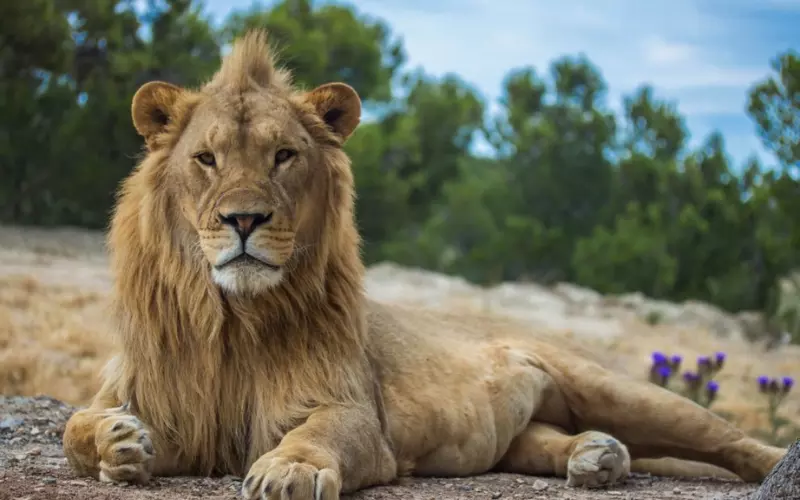
Lions are magnificent and powerful creatures found in the wild today, and they have a distinct habitat that suits their needs. Lions are primarily found in Africa’s grasslands, plains, and savannahs. These vast open spaces with scattered trees and bushes provide the perfect surroundings for lions to thrive.
The habitat of lions offers a strategic advantage for hunting, allowing them to spot their prey from a distance. Lions are known for their exceptional hunting skills, and the grassy plains provide excellent camouflage, allowing them to sneak up on their unsuspecting victims. Additionally, the open areas make it easier for lions to sprint and chase down their prey.
Moreover, lions prefer habitats with a reliable source of water nearby. They are often found near rivers, streams, or waterholes. Water is crucial for lions as it satisfies their hydration needs and attracts other animals, making it easier for lions to find food. These water sources also provide a cool spot for lions to rest under the shade of trees during the day’s scorching heat.
Lions feel at home in the vast grasslands and open plains of Africa. These habitats provide the conditions for lions to hunt, blend in with their surroundings, and access water. The unique features of their habitat greatly contribute to the survival and success of the magnificent lions in the wild.
Classification of Lion
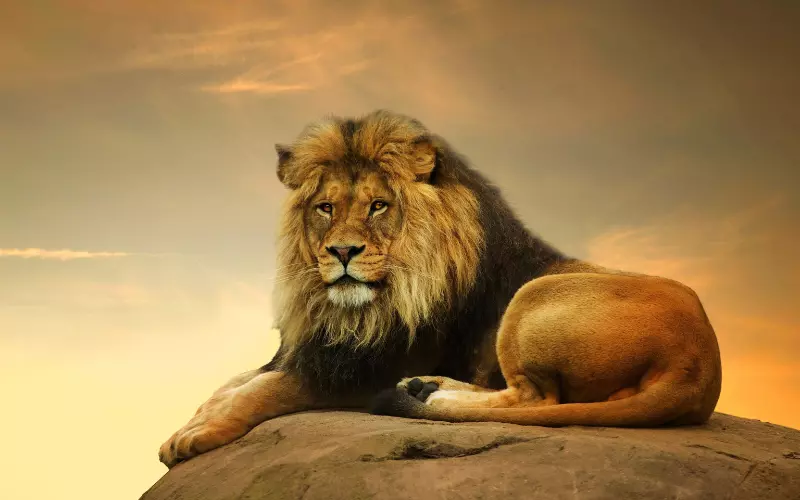
The lion is a fantastic creature that belongs to the animal kingdom and the big cat family. It is scientifically known as Panthera Leo. Lions are often called “the king of the jungle” due to their majestic appearance and powerful presence. They are mainly found in grasslands and savannas across Africa, and a small population can also be found in the Gir Forest of India.
Lions have a distinct classification within the animal kingdom. They belong to the family Felidae, which includes other big cats like tigers, leopards, and cheetahs. Regarding their species, lions have a separate classification as Panthera leo, differentiating them from other types of lions found in the fossil record. These classifications help scientists categorize and organize the different species of lions and understand their unique characteristics.
When it comes to their physical features, lions are easily distinguishable. They have a large and muscular body, with males being bigger than females. Their coat is yellow-tan and covered in short fur, with males having a mane of long hair around their neck and head. This mane helps them appear more intimidating and protects their vital throat area during fights. Lions also have powerful jaws and sharp teeth, making them skilled hunters.
The classification of lions is an essential aspect of understanding and studying these magnificent animals. They are classified as Panthera leo within the family Felidae, making them the largest and most powerful members of the cat family. By learning about their classification, we can appreciate the unique qualities of lions and continue to protect and conserve their populations in the wild.
Different Types of Lion

1. African Lion: The most well-known type of lion that lives in the grasslands and savannahs of Africa. They have majestic manes and strong limbs and are social animals, living in groups called pride.
2. Asiatic Lion: Found in the Gir Forest of India, the Asiatic lion is a slightly smaller cousin of the African lion. With a distinctive fold of skin on their bellies and living in smaller groups, they are critically endangered and protected.
3. Transvaal Lion: Also known as the Kalahari lion, it is found in the desert regions of southern Africa. These lions have adapted to survive in harsh desert conditions and often hunt and scavenge in small prides or alone.
4. Masai Lion: Named after the Masai people of Kenya, these lions are known for their darker mane and wider habitat range. They can be found in both grasslands and woodlands, and their strong social structure ensures pride’s survival.
5. Barbary Lion: Formerly found in northern Africa, the Barbary lion is extinct in the wild today. Recognized by their thick, dark mane, they were once famous for their size and strength, often hunted by Roman emperors for their entertainment.
6. Central African Lion: Living in the dense rainforests of Central Africa, these lions possess darker fur and a shorter mane. They have adapted to their environment by being excellent tree climbers, often using the trees to rest or hide.
7. South African Lion: Found in the southern regions of Africa, these lions are known for their ability to swim, enabling them to cross rivers and reach different territories. Their mane is smaller and lighter compared to other types of lions.
8. Namibian Lion: Inhabiting the Namib Desert in southwestern Africa, these lions have adapted to the challenging desert conditions. They are skilled swimmers, using their strong paws to navigate through the sandy dunes while hunting or roaming.
9. White Lion: Although not a separate species, their distinct appearance sets them apart. These lions have pale, cream-coloured fur due to a rare genetic condition called leucism. Originating from the Timbavati region in South Africa, white lions hold cultural significance in local folklore.
10. Zero-Lion: Zero-lions don’t exist! Sorry for the trick; there are only nine types of lions worldwide. The number “zero” indicates no additional type of lion other than the ones mentioned before.
Geographical Presence of Lion
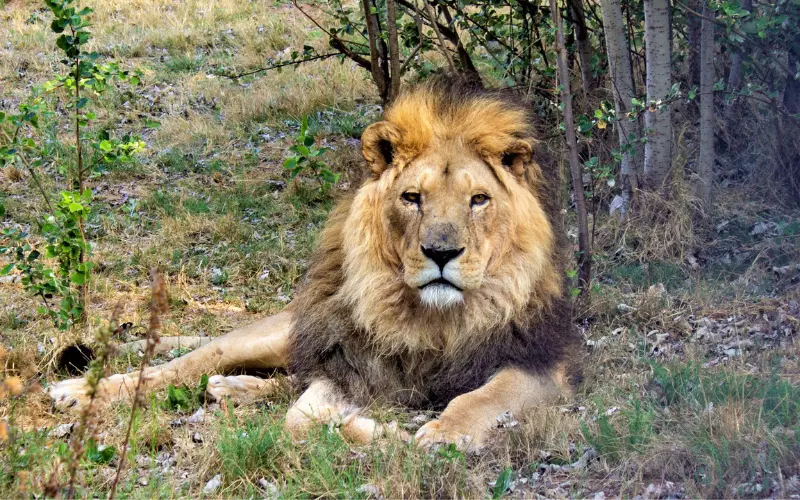
Lions can mostly be found in the continent of Africa. They roam freely across grasslands, savannas, and open woodlands in regions such as the Maasai Mara in Kenya, the Serengeti in Tanzania, and Kruger National Park in South Africa. These majestic creatures are known for their distinctive features, such as a tawny-coloured coat, a large mane, and a muscular build. They are skilled hunters and live in pride groups of lions led by a dominant male known as a “lion king.”
However, lions are not found in other parts of the world. They are not native to the Americas, Australia, or most parts of Asia and Europe. Due to their specific habitat requirements and historical distribution, lions are absent from these regions. It is important to note that while lions may be found in some zoos worldwide, they are not naturally found in these areas.
Unfortunately, lions have faced various threats, and their populations have drastically declined. Habitat loss, human-wildlife conflict, and poaching are major challenges they face. Conservation efforts are crucial in protecting these magnificent animals and ensuring their survival in the regions where they are naturally found. By preserving their habitat, raising awareness about their importance, and supporting initiatives that prevent illegal wildlife trade, we can help ensure a future where lions continue to roam the African savannas.
Diet of Lion
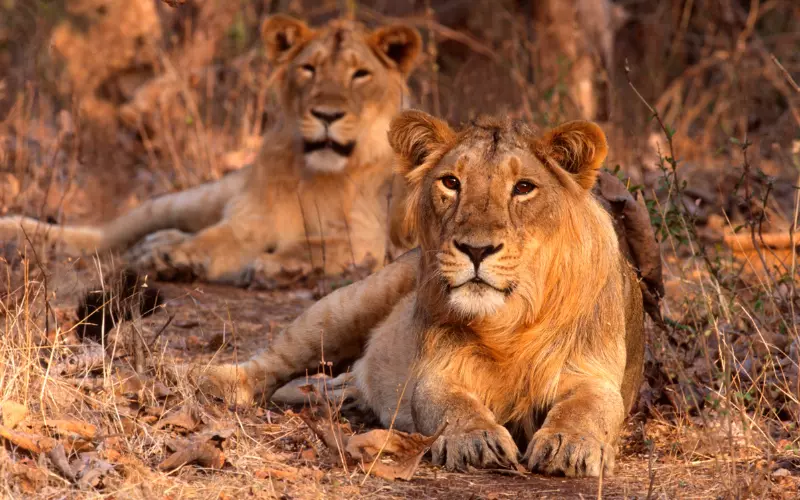
Lions, also known as king of the jungle, are magnificent and powerful creatures that live in the wild. They have a strict diet that consists mainly of meat. Their meal plan mainly consists of large herbivores such as buffaloes, zebras, and deer. These animals are the main source of food for lions, providing them with the necessary proteins and energy they need to survive.
To catch their prey, lions work together in groups called prides. They rely on their keen senses, such as their excellent eyesight and hearing, to track and ambush their unsuspecting victims. Lions are also incredibly fast runners, allowing them to chase down their prey. Once caught, they use their sharp teeth and strong jaws to secure their meal.
The diet of lions is crucial for their survival. It not only provides them with the necessary nutrients, but it also helps maintain the balance of the ecosystem. By preying on large herbivores, lions prevent overpopulation, which can negatively impact the environment. They play a vital role in the food chain, keeping it in check and ensuring the overall health of their habitat.
Lions’ diet mainly consists of meat from large herbivores, which they hunt and catch in the wild. This diet gives them the essential nutrients to survive and maintain their strength. Lions are an important part of the ecosystem, as their predatory habits help regulate animal populations and ensure the overall balance of their environment.
Locomotion of Lion
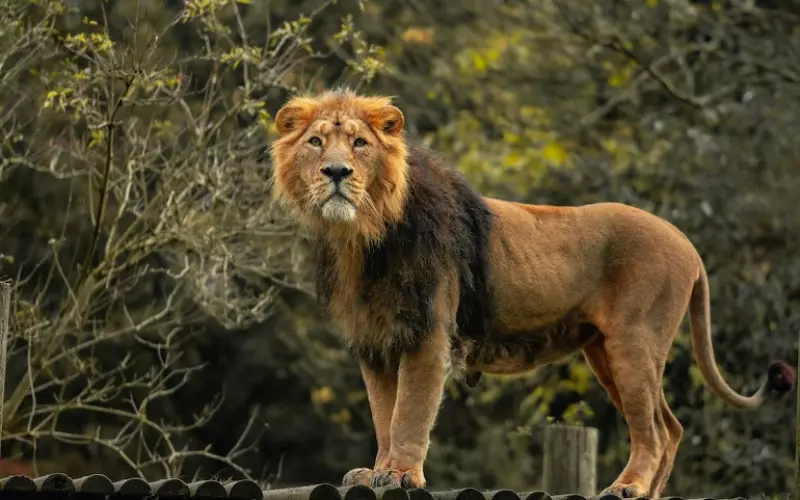
Lions, the jungle kings, move uniquely and powerfully. With their strong and muscular bodies, they can run at remarkable speeds, reaching up to 50 miles per hour in short bursts. Their long legs and flexible spines help them quickly cover large distances, which is handy when hunting for food.
When a lion is on the move, it uses a style of locomotion called a trot. It uses its coordinated front and back legs during a trot, giving it a steady and smooth walk-like movement. Lions keep their bodies closer to the ground while trotting like other big cats. This low posture allows them to maintain stability and balance while navigating their habitat.
In addition to trotting, lions are also capable of sprinting. When they spot their prey, they can switch from a trot to a full-on sprint in seconds. During a sprint, lions rely on their powerful hind legs to propel themselves forward, while their front legs help them maintain balance and direction. With their remarkable speed and agility, lions are fearsome hunters and can swiftly catch their prey, ensuring their survival in the wild.
Social and Sexual Behaviour of Lions

Lions are fascinating creatures with interesting social and sexual behaviours. They live together in groups called pride, which consist of multiple lionesses, their babies, and a few male lions. Lionesses are the primary hunters in the pride and work together to catch prey successfully.
Within the pride, the lionesses have a close bond and work together to raise their cubs. They collaborate in hunting, share their food, and protect each other from threats. The lionesses also communicate using various vocalizations, such as growls, roars, and grunts, to establish dominance and maintain social harmony within the pride.
When mating, the male lion is vital in protecting and defending the pride. Typically, one or two male lions will mate with all the fertile lionesses in their territory. They mark their territory by scent marking, roaring, and patrolling. The dominant males mate frequently to ensure their genes are passed on to the next generation.
Overall, lions exhibit complex social structures and engaging sexual behaviours. Their prides provide a safe and supportive environment for raising their young, while the lionesses work together in hunting and protecting each other. Meanwhile, male lions play a crucial role in protecting the pride and ensuring successful mating.
Reproduction and Lifecycle of Lion
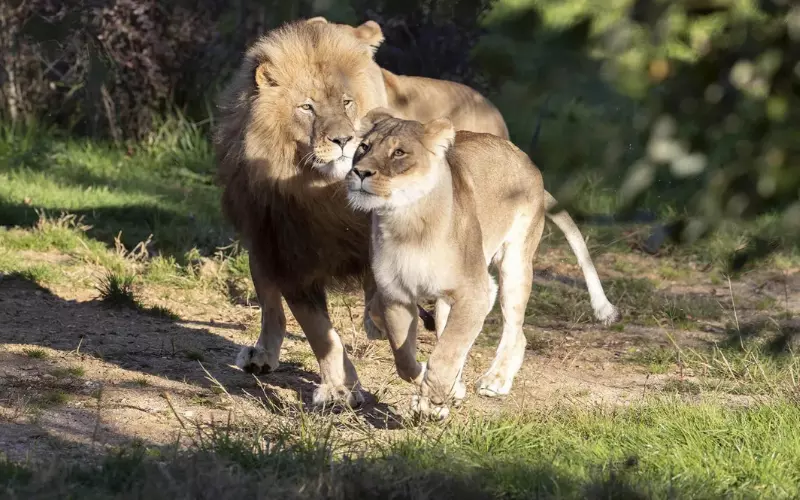
Lions, like most other animals, reproduce sexually. The mating season for lions can occur at any time of the year, but it usually peaks during the rainy season when food is abundant. During this time, the male lion, known as the “lion king,” competes with other males in pride for the right to mate with the females. This competition can be fierce, with the victorious lion claiming his place as the dominant male.
Once the male lion has successfully mated with the females, the lionesses, or female lions, will give birth to a litter of cubs. After a gestation period of about 110 days, the mother usually gives birth to 2 to 4 cubs. These cubs are born blind and highly vulnerable. The lioness must provide them with a safe environment in the pride.
The lion cubs rely solely on their mother’s milk for sustenance for the first few weeks. As they grow older, they begin to eat meat provided by the adult lions in the pride. This transition happens gradually; the cubs are usually fully weaned at around six to eight months old. They will continue to learn and develop their hunting skills by playing with other cubs in the pride.
As the lion cubs grow, they become more independent and explore their surroundings. They will leave the pride to establish their territory at around two to three years old. This marks the beginning of their adulthood, and the cycle starts anew. Lions have a majestic life cycle that revolves around survival, procreation, and the natural balance of nature.
Threats to Lion

Lions, majestic creatures of the wild, face various threats that endanger their existence. One major menace to lions is habitat loss. As human populations grow, they require more land for their homes and agriculture. This often leads to the destruction of lion habitats, depriving them of their hunting grounds and forcing them into smaller, fragmented areas. With less space, lions struggle to find food and are more prone to conflict with humans and their livestock.
Another threat that looms over lion populations is poaching and illegal hunting. Sadly, lions are hunted for their body parts, such as bones and skin, which are sought after in certain cultures for traditional medicine or as trophies. This cruel and illegal activity has a devastating impact on lion populations, leading to a decline in their numbers. Additionally, some people engage in trophy hunting, where lions are killed for sport, posing a significant threat to their survival.
Lastly, human-lion conflicts present a grave danger to these magnificent creatures. As human settlements expand into lion territories, conflicts arise when lions attack livestock or, in rare cases, humans. In retaliation, communities may kill the lions to protect their livestock or as an act of vengeance. This escalates the human-wildlife conflict and contributes to the decline in lion populations.
In a nutshell, the threats facing lions are habitat loss, poaching, and human-lion conflicts. These dangers put lions at risk of nearing extinction. Governments, organizations, and individuals must work together to protect these iconic creatures by preserving their habitats, combating illegal hunting, and implementing measures to minimize human-lion conflicts. The fate of lions rests in our hands, and we are responsible for ensuring that future generations can witness their beauty and strength in the wild.
Conclusion
The lion is a fascinating creature with a rich history. It is one of the most well-known animals in the world. Lions can be found in Africa and are often referred to as the “king of the jungle.” These majestic beasts are known for their beautiful manes and fierce hunting skills.
In size, adult male lions can weigh up to 420 pounds and reach 10 feet. Female lions, on the other hand, are generally smaller and lighter. Lions are well-adapted to their habitat, which includes grasslands and savannas. They have sharp claws and strong jaws to help them catch and kill their prey.
Regarding classification, lions and tigers, leopards, and jaguars are part of the big cat family. They are known as “Felidae” in the scientific community. Lions are social animals and live in groups called prides. These prides usually consist of several females, their offspring, and a few dominant males.
Lions are magnificent creatures that have captivated humans for centuries. Their history, facts, size, habitat, and classification all contribute to their allure. As one of the most recognizable animals, the lion embodies power and strength. Learning about these fantastic animals will surely spark curiosity and admiration for the diverse world of wildlife.
FAQ’s
What is a lion?
A lion is a large carnivorous mammal that belongs to the Felidae family.
Where do lions live?
Lions are native to Africa and can be found in savannas, grasslands, and open woodlands.
How big do lions grow?
Adult male lions can weigh between 330 to 550 pounds (150 to 250 kilograms) and measure around 8 to 10 feet (2.5 to 3 meters) in length, excluding the tail.
What is the average lifespan of a lion?
In the wild, lions typically live for about 10 to 14 years, while in captivity, they can live up to 20 years or more.
Are lions social animals?
Yes, lions are highly social animals that live in groups known as pride, which usually consist of related females and their offspring led by a dominant male.
What is the diet of a lion?
Lions are apex predators, primarily feeding on large ungulates such as zebras, wildebeest, and buffalo. They are opportunistic hunters and also scavenge if the opportunity arises.
Are lions endangered?
Yes, lions are currently listed as a vulnerable species on the IUCN Red List due to habitat loss, hunting, and human conflicts.
How fast can a lion run?
Lions can reach up to 50 miles per hour (80 kilometres per hour) in short bursts, but they are not as fast as cheetahs.
Are lions the only social big cats?
No, apart from lions, spotted hyenas are also highly social and live in large groups called clans.
Can lions swim?
Although not their preferred activity, lions can swim if necessary, especially when trying to cross rivers or lakes.
Do lions have any natural predators?
Adult lions have no natural predators, but lion cubs are vulnerable to attacks from large carnivores like hyenas, leopards, and other male lions.
How do male lions mark their territory?
Male lions mark their territory using scent markings, such as spraying urine and rubbing their cheeks and bodies on trees or rocks.
How do female lions contribute to hunting?
Female lions are primarily responsible for hunting and sharing their kills with the rest of the pride, including the cubs.
Do lions roar?
Yes, lions are known for their iconic deep and resonant roars, which can be heard up to 5 miles (8 kilometres) away.
Can lions climb trees?
While lions are not particularly adept tree climbers, they can climb trees to escape threats and sometimes use them as vantage points.
How many lion subspecies are there?
There are currently two recognized lion subspecies: the African lion (Panthera leo leo) and the Asiatic lion (Panthera leo persica).

Hi there! I’m Morgan Gutierrez, and I love animals! I work as a Seasonal Animal Care Specialist at Brookfield Zoo and also teach people about animals, which is super fun. I studied at Valparaiso University in Lockport, Illinois, where I learned even more about these amazing creatures.
I’m not just about taking care of animals; I write articles about them, too! I explore and share many interesting animal stories, from cute kittens to giant elephants.
In the past, I’ve worked with veterinarians, helped with research, and even been an Animal Ambassador, bringing animals closer to people. Animals are my passion, and I enjoy helping others learn about them. So, if you ever want to know about animals, feel free to ask. I’ll explain it in a way that’s easy to understand, just like talking to a friend!

